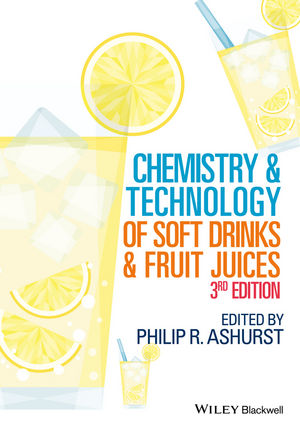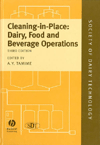Novelist Dan Brown has seen his protagonist Robert Langdon decipher his fair share of codes and symbols in his best-selling novels, but for consumer packaged goods (CPG) companies, it’s all about clear, concise codes instead of ones that contain hidden secrets.
Bill Bonaccorsi, director of marketing for Gurnee, Ill.-based Domino Amjet Inc., notes that beverage manufacturers are looking for efficient tracking and traceability when it comes to coding technology that is capable of coding and marking machine-readable codes. The ability to print a higher quantity of data at high speeds also is important, he adds.
The growing number of counterfeit products has contributed to the need for these codes for legitimate CPG companies. In 1998, European Union (EU) customs officials confiscated 1 million items of counterfeit alcohol at its borders, Bonaccorsi says. That figure grew to 250 million in 2008, he states.
To help combat this problem, in 2005, the EU introduced regulations that require wine and winemaking ingredients to be traceable to the individual lot or batch number.
“In practice, this means growers, producers, distributors, wholesalers, exporters and importers must be able to identify their suppliers and customers and provide the information to the authorities on demand,” Bonaccorsi says. “This calls for tightly integrated information systems managing production and distribution equipment capable of reading a variety of coding protocols with 100 percent precision. We expect this trend to continue throughout the beverage segments and regional markets around the world.”
It grows and grows
The Temptations sung about a growing love in its 1965 hit single “It’s Growing.” Although not the same as the love between a couple, the song’s lyric “And where it’s going to stop I’m sure, nobody knows,” can be applied to the growing number of SKUs in the beverage industry.
With line extensions, emerging brands and new innovative categories, SKU proliferation continues to impact the demands and capabilities of coding equipment. One such trend in the beverage space is the launch of premium or luxury products.
“As mature markets exhibit relatively slow growth, beverage producers have focused on premiumization to drive growth,” Bonaccorsi says. “This, in turn, has generated increased production complexity in the business.”
Beyond new products, additional package sizes have added another dynamic when it comes to coding technology.
“Beverage producers, particularly in the soft drinks segment, are offering a wider selection of packaging sizes and formats and giving consumers a greater range of price points and choices,” says Drew Weightman, beverage vertical marketing manager for Wood Dale, Ill.-based Videojet Technologies Inc. “However, the wider selection can often mean shorter production runs in the beverage production facility and more frequent line changeovers.”
To address this concern, Weightman says equipment needs to feature accelerated code changes during the line changeover and reduce the number of code change errors.
Videojet offers a line of products to help manufacturers meet these demands. Its 1000 line of continuous inkjet printers is designed to keep production up and running longer, the company says.
“They provide the longest published maintenance interval in the industry, with up to 14,000 hours of protection before required preventative maintenance,” Weightman says.
The line also offers an auto-cleaning function with its The Clean Flow printhead design, which requires less cleaning and enables longer runs without intervention, he adds. Videojet’s 1000 line also features a user interface that displays all of the printer operation information in a WYSIWYG display, which means manufacturers can see exactly what will be printed on the packaging, Weightman notes.
Addressing speed and proliferation trends is its Videojet 3320 laser marking system. “The Videojet 3320 laser marking system provides more information at higher speeds, including multi-line text, machine-readable codes and unlimited fonts, graphics and format flexibility,” Weightman says. “This system provides permanent, high-resolution marks at the speeds of today’s beverage production lines.”
Also recognizing the need for speed, Domino offers its new D-Series lasers, which are capable of speeds of more than 60,000 bottles an hour. The D-Series employs the company’s new intelligent technology (i-Tech) and was designed to make production lines lower maintenance, less expensive and more efficient, the company says.
Part of the new D-Series are the D120i and the D3201, which feature lasers that are ideal for coding on a variety of materials on low- and high-speed lines, according to the company. The D620i laser is well-suited for demanding applications and environments, such as high-speed beverage packaging or serialization requirements with both human-readable and 2-D data matrix coding, the company says.
Utilizing its patented technology, the i-Tech RapidScan improves the ability of the D-Series to code difficult-to-mark materials and print more complex codes, it adds.
Domino also recognizes the need for equipment to be easy to use, which can bring about increased efficiency to accommodate the growing SKU base.
“Manufacturers want coding and marking solutions that minimize or eliminate planned downtime, feature simple user interfaces to make employees more productive through multi-skilling and can be incorporated into existing packaging lines with minimal disruption,” Bonaccorsi says.
To accommodate this, Domino introduced its QuickStep User Interface for simplified operator usage. Quickstep is available in numerous lines including the new D-series, according to the company.
Staying flexible
As with so many components of the supply chain, flexibility is a phrase that can be applied to many aspects. Given the number of new products and packages, coding technology must be flexible to accommodate this product base.
“Beverage producers are increasingly looking for coding equipment that offers both a reliable solution for today’s needs and the capability to address future requirements,” Videojet’s Weightman says.
For using pigmented inks to deliver bright, crisp codes in a variety of colors that work on dark surfaces, Videojet offers its 1710 High Contrast Continuous Ink Jet coder. The printer has been adopted by brewers for coding on amber or green bottles and by carbonated soft drink producers for coding on bottle caps or polyethylene terephthalate (PET) that is filled with a dark-colored liquid, Weightman says.
“With the Videojet 1710, we are able to offer the many benefits of these high-contrast, easily readable codes without the unreliability or time-consuming daily maintenance that has plagued other pigmented printers,” he says.
Coding equipment companies also are developing new ways to make laser application more easily readable on PET bottles.
Pro Mach’s ID Technology recently released its IDT Macsa K-1000 Series 9.3 Micron carbon dioxide (CO2) laser. Designed specifically for the coding of PET bottles, IDT Macsa K-1000 Series 9.3 Micron CO2 guarantees crisp, clear consumer coding information with excellent contrast, the company says.
The laser creates a whitish mark by foaming the surface of the bottle so that the mark is visible with high contrast, and it eliminates the change of material penetration and puncture, according to the company. Depending on the application, higher-mark speeds that use a lower wattage laser are possible on PET with the 9.3 micron CO2 laser, it adds.
Although easily readable codes are important, accuracy is just as crucial.
“Applying the correct code in the correct location and on the correct product is critical as companies must ensure that their product orders are completed accurately and on time; otherwise, they risk incurring penalties or losing business,” Videojet’s Weightman says.
Videojet’s Clarisuite helps to ensure that consistent and accurate messages are applied to products and packaging, he adds. A fully integrated code assurance solution, Clarisuite links on-product coding to a centralized message database.
“By using Clarisuite, beverage operations managers are able to streamline their processes to drive productivity and, at the same time, minimize risk, rework and recalls,” Weightman says.
Domino also offers software to minimize errors. Its Quickstart Coding Automation software is capable of effectively connecting to manufacturing plants’ ERP systems and centralizing coding management to minimize errors, Bonaccorsi says.
With the ever-changing landscape of the beverage sector, coding equipment will continue to stay on top of the trends.
“The future of coding technology likely includes additional improvements to drive uptime as well as dramatic improvements in user interface and connectivity,” Weightman says. BI










